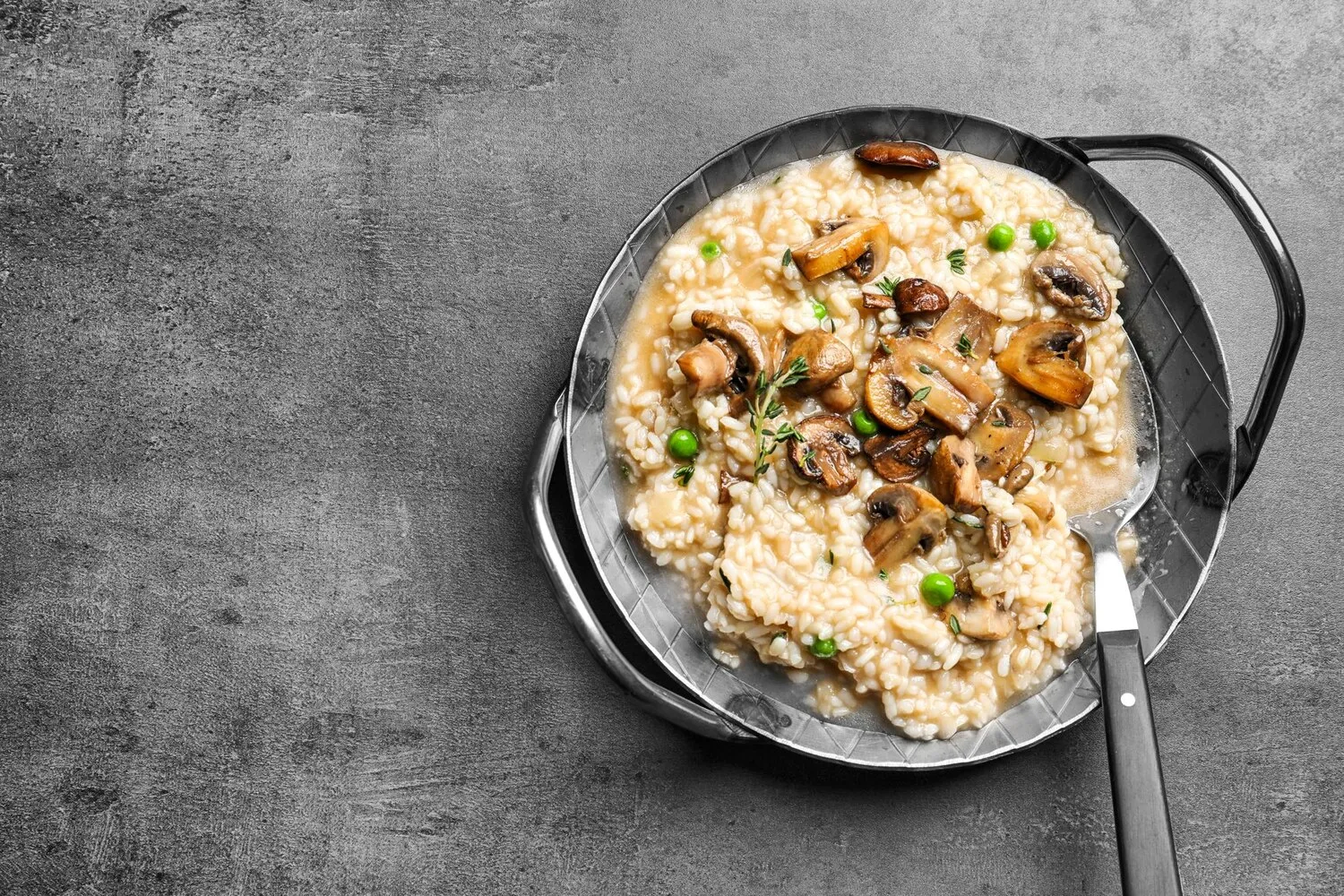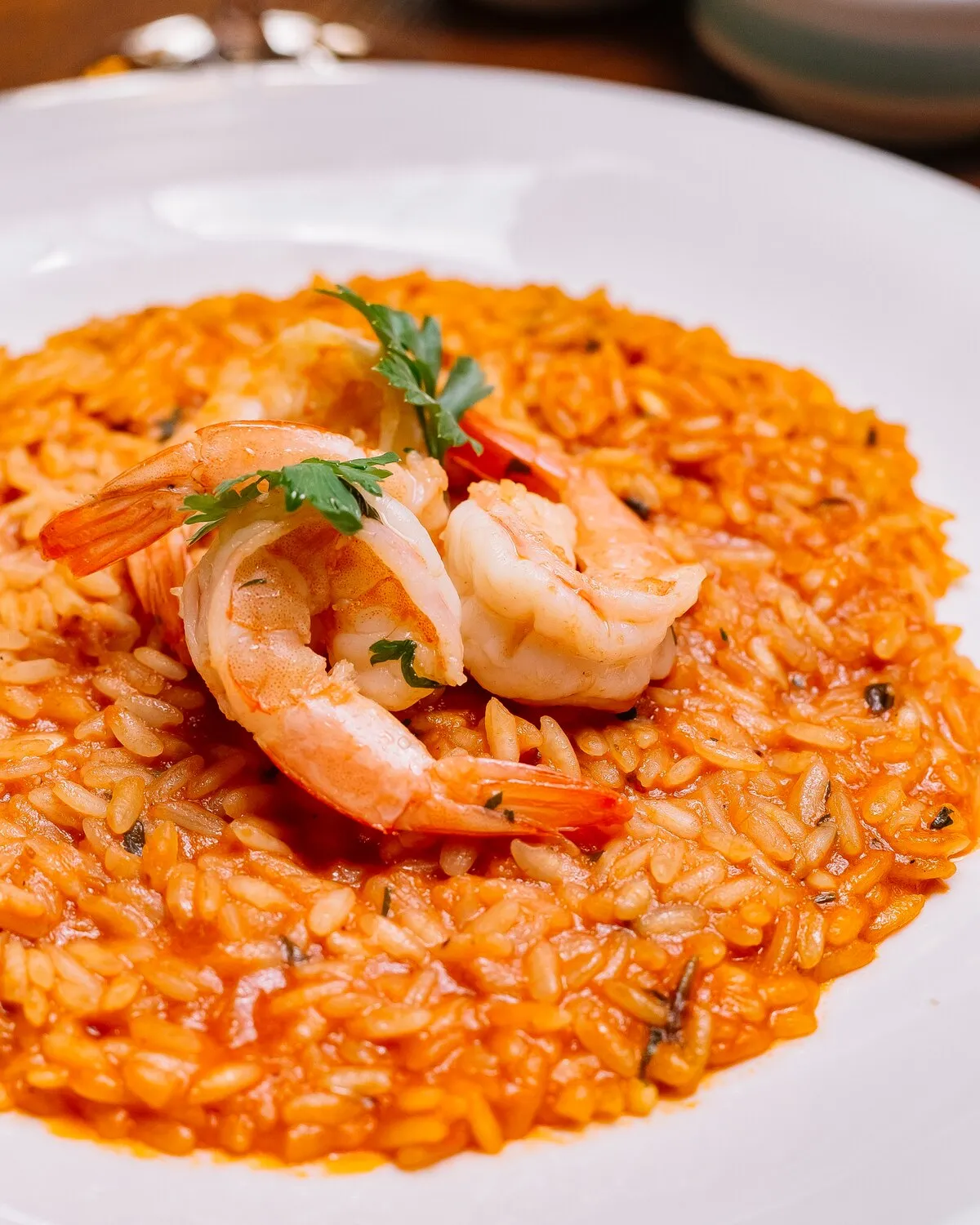
Risotto Funghi
Risotto with mushroom and truffle oil.
Nutrition Facts
* The % Daily Value (DV) tells you how much a nutrient in a serving of food contributes to a daily diet. 2,000 calories a day is used for general nutrition advice.
Risotto, in general, emerged in Italy around the 15th century, influenced by Arabic rice cultivation in Sicily and the Po Valley. The evolution of risotto funghi specifically reflects the abundance and appreciation of wild mushrooms in Italian cuisine, particularly in northern regions.
Risotto funghi, like other risotto variations, is considered a refined and comforting dish in Italian culture, often served as a primo (first course) in more formal meals or as a satisfying standalone dish.
Regional Variations
The specific types of mushrooms used in risotto funghi vary greatly depending on the region. Northern Italy, with its vast forests, is particularly known for its risotto funghi recipes using prized porcini mushrooms.
Seasonal Dish
Risotto funghi is often associated with autumn, the season when many wild mushrooms are at their peak. Freshly foraged mushrooms are highly valued, adding to the dish's prestige.
Family Gatherings
Risotto, in general, is often prepared for special occasions and family gatherings. The slow cooking process and the need for constant attention are seen as a labor of love, making it a symbol of care and dedication.
Risotto Funghi offers an earthy and umami-rich flavor profile, with creamy textures and aromatic notes from mushrooms and truffle oil.
The dominant flavors come from the variety of mushrooms used, such as porcini, cremini, shiitake, or oyster mushrooms, each contributing unique earthy and savory nuances. Truffle oil, though sometimes controversial, provides a luxurious and intense aromatic enhancement. The creamy texture is achieved through the slow addition of broth to Arborio rice, releasing starches and creating a rich, velvety sauce. Parmesan cheese adds saltiness and further depth of flavor. Onions, garlic, and white wine contribute aromatic base notes.
Rice Selection
Use Arborio, Carnaroli, or Vialone Nano rice. These varieties have a high starch content, which is essential for achieving the creamy texture characteristic of risotto.
Broth Temperature
Keep the broth simmering hot while adding it to the rice. This helps maintain the rice's temperature and allows it to absorb the broth evenly.
Stirring Technique
Stir the risotto frequently but gently. Constant stirring helps release the starches from the rice, creating the creamy texture. Avoid over-stirring, as this can make the risotto gluey.
Truffle Oil Usage
Use truffle oil sparingly and with caution. Some truffle oils are artificial and can overpower the delicate flavors of the mushrooms. Consider using fresh truffles instead for a more authentic and nuanced flavor.
Explore additional Risotto dishes and restaurants
Explore RisottoDiscover top dining spots and culinary experiences in Nancy.
Explore NancyLearn more about the food culture, restaurant scene, and culinary heritage of France.
Explore France

